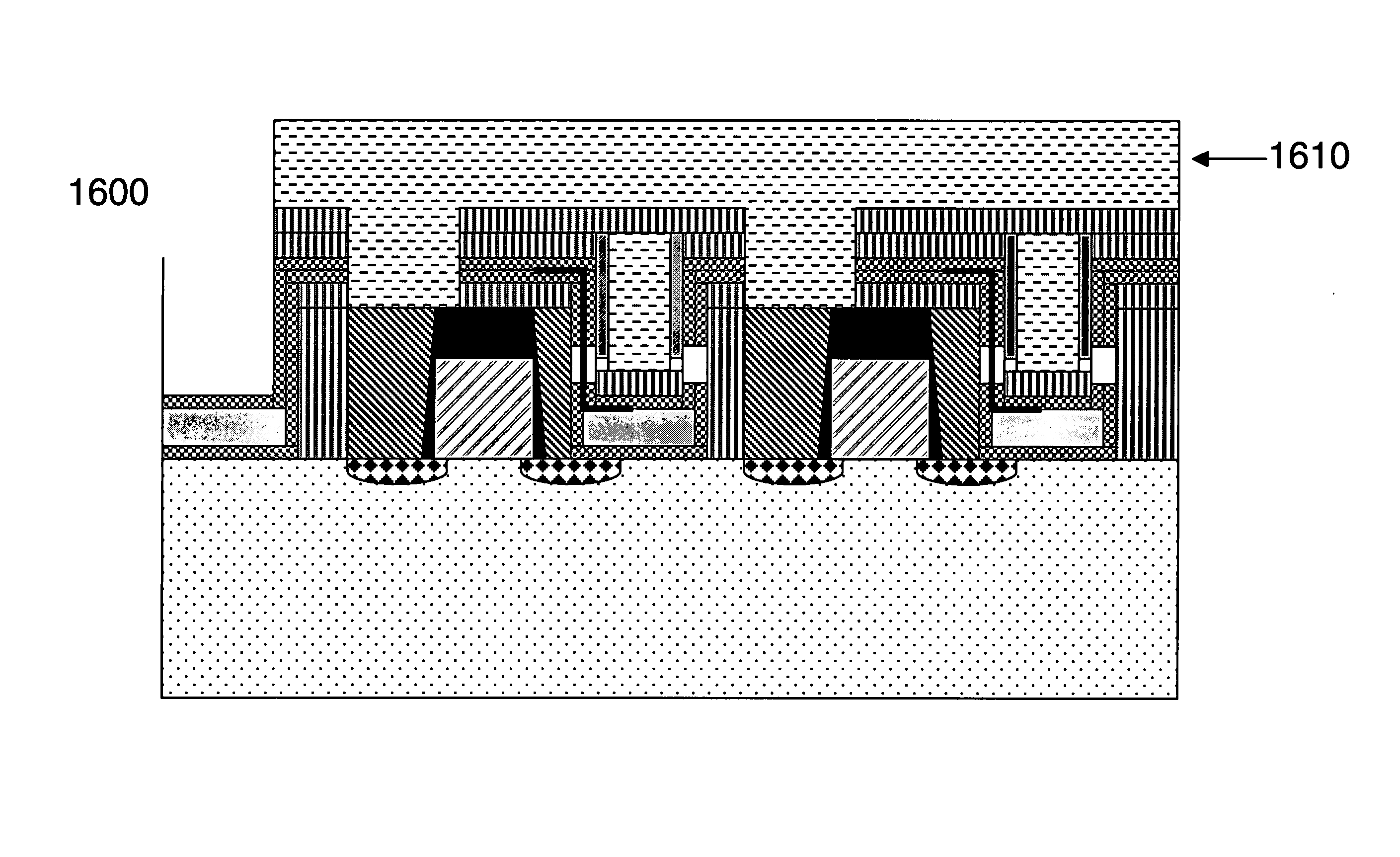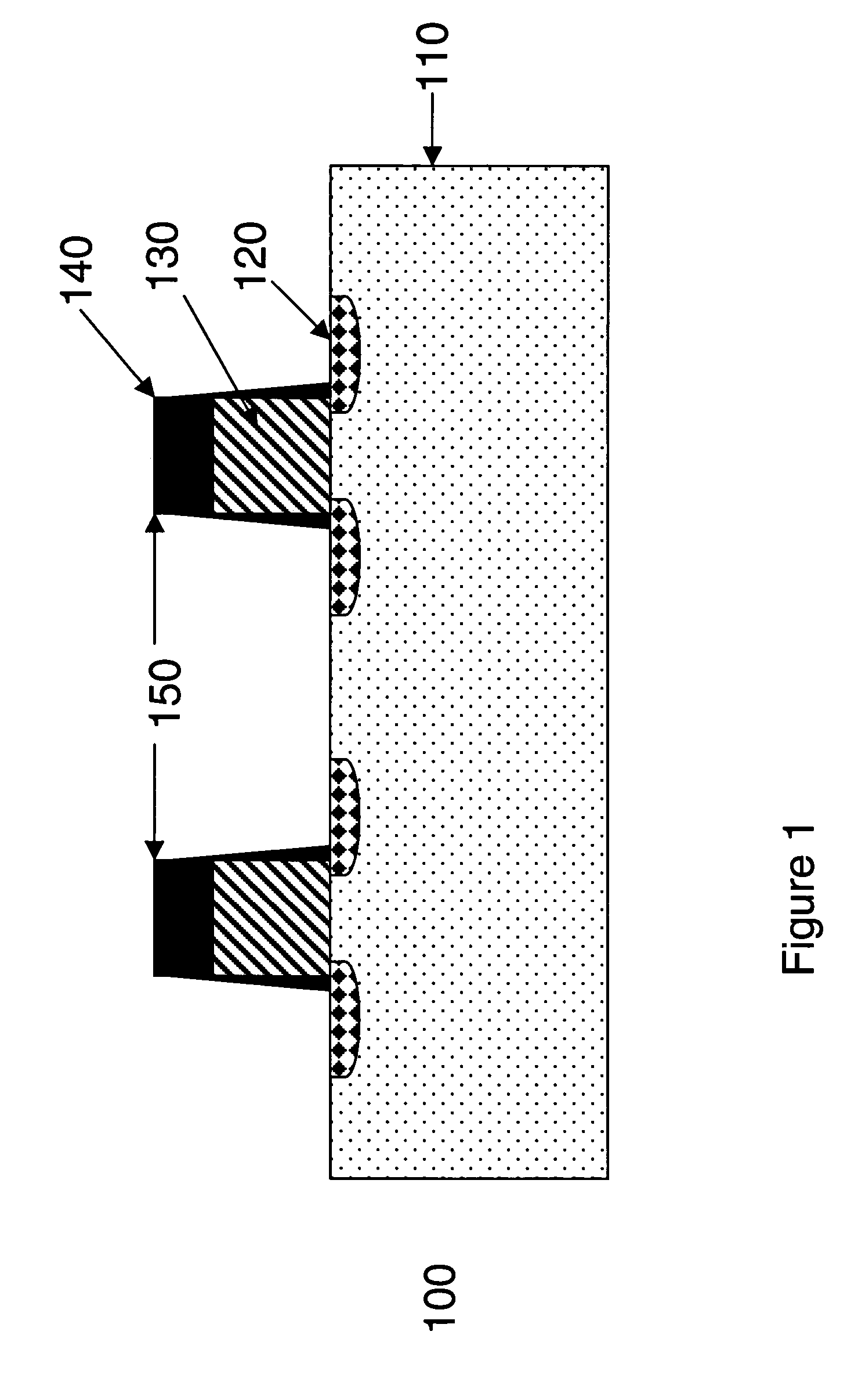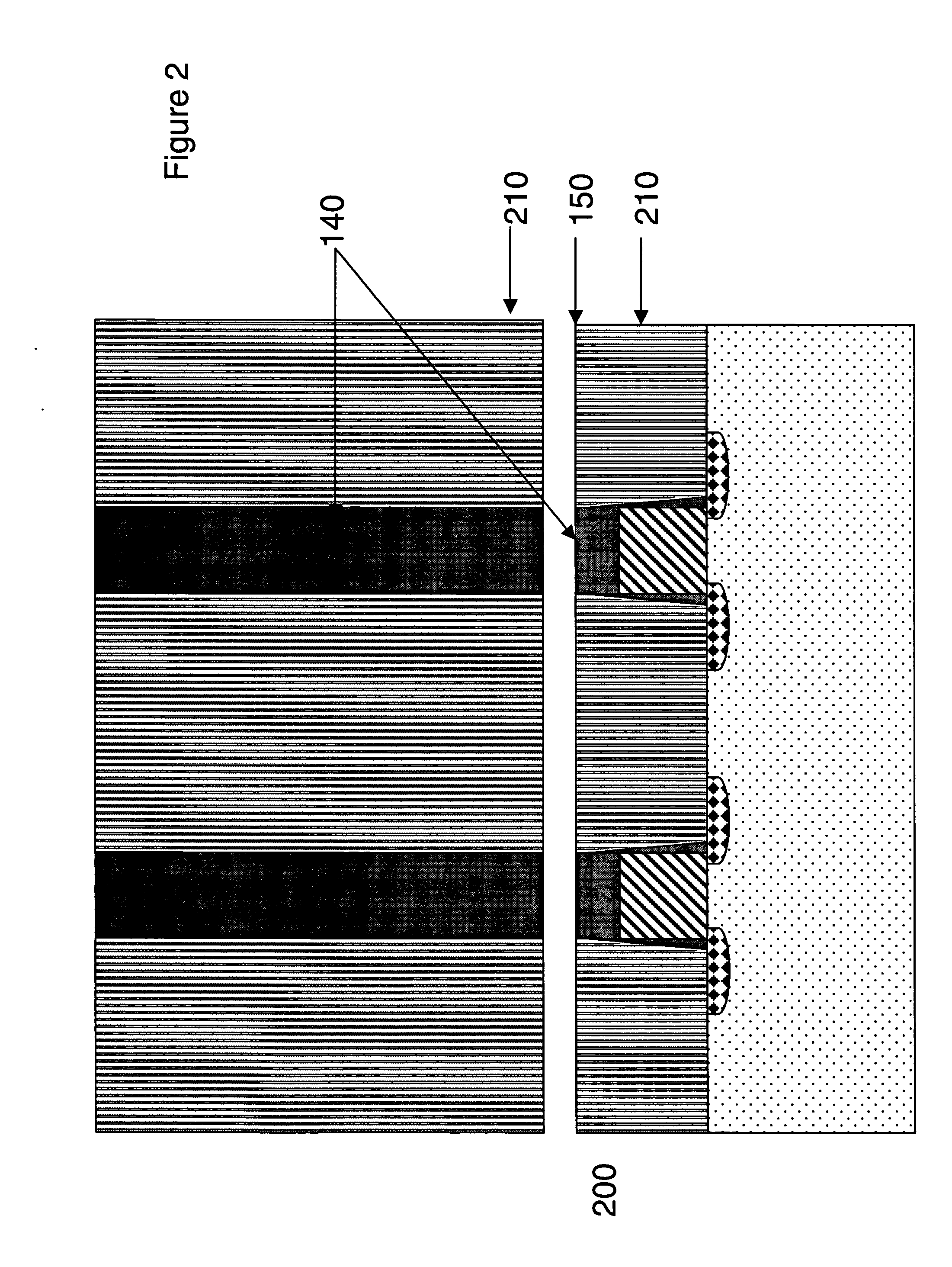Process for making byte erasable devices having elements made with nanotubes
a technology of nanotubes and switching elements, which is applied in the field of manufacturing devices using transistors and nanotube switching elements, can solve the problems of long write cycles (ms), low relative speed in comparison to dram or sram, and relatively low cost of rom,
- Summary
- Abstract
- Description
- Claims
- Application Information
AI Technical Summary
Benefits of technology
Problems solved by technology
Method used
Image
Examples
Embodiment Construction
[0043] The device made by the present invention can be described by its cell size. For a bit selectable, Byte / Word erasable cell, 1T-cell, (a one transistor cell) the minimum cell size would be 8 F2, (F2 is a reference to the smallest feature size, squared.) Advantages of using this method include, that most likely no new tooling would be required to perform the methods in a fabrication plant. Nanotubes are dispensed by regular spin-coating and patterned using traditional lithography. Nanotube switching element requires controlled air gap and anchor to structures adjacent to the gap.
[0044] A typical nanotube device is composed of a nanofabric as described in U.S. patent application Ser. No. 09 / 915093, Electromechanical Memory Array Using Nanotube Ribbons and Method for Making Same, filed Jul. 25, 2001 (NAN-1); U.S. patent application Ser. No. 09 / 915173, Electromechanical Memory Having Cell Selection Circuitry Constructed with Nanotube Technology, filed Jul. 25, 2001 (NAN-2);
[0045]...
PUM
 Login to View More
Login to View More Abstract
Description
Claims
Application Information
 Login to View More
Login to View More - R&D
- Intellectual Property
- Life Sciences
- Materials
- Tech Scout
- Unparalleled Data Quality
- Higher Quality Content
- 60% Fewer Hallucinations
Browse by: Latest US Patents, China's latest patents, Technical Efficacy Thesaurus, Application Domain, Technology Topic, Popular Technical Reports.
© 2025 PatSnap. All rights reserved.Legal|Privacy policy|Modern Slavery Act Transparency Statement|Sitemap|About US| Contact US: help@patsnap.com



